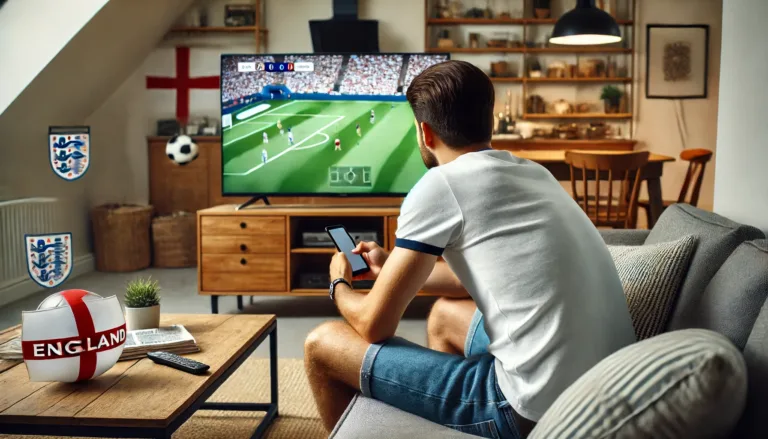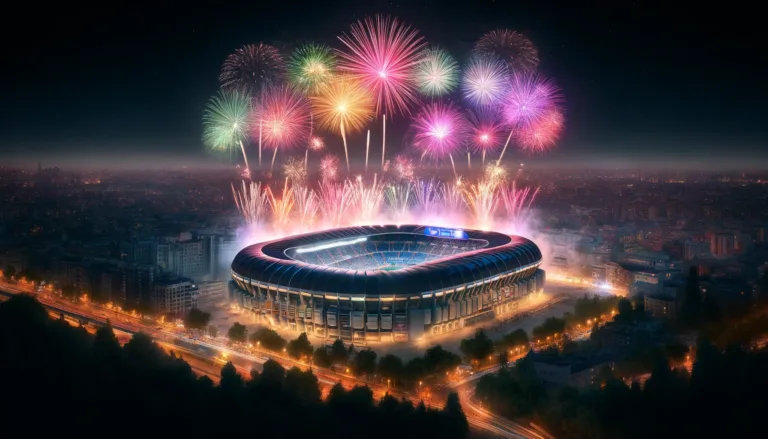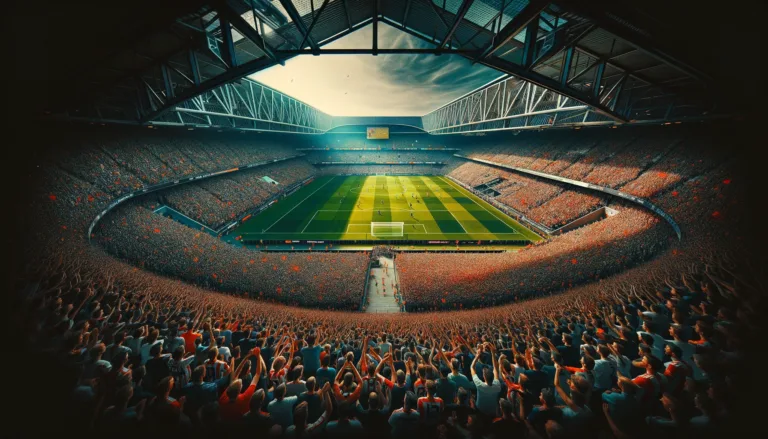Bayern München vs Real Madrid 2-2: Full Game Summary and Tactical Analysis
The Champions League semifinal match between Bayern München and Real Madrid ended with a 2-2 draw, leaving the door open for both teams on the return leg in Madrid. This result benefits Real Madrid though, who will need a home win next week to secure their place in the Wembley finals.
Starting Lineups
From the host’s side, the main absence was Matthijs de Ligt, confirmed as not playing before the game, and replaced by Min-jae Kim. On the other side, Carvajal was suspended for this one, due to the yellow card he received in the previous round against Manchester City.
The key duels to watch in this match were between Antonio Rüdiger and Harry Kane, with Rüdiger managing to keep the striker well under control, and on the wings, between Leroy Sané and Jamal Musiala against Ferland Mendy, and Lucas Vázquez.
Match Report
The game started strongly for Bayern, who dominated the early minutes. The German team attempted to set a fast pace but was unable to successfully finish the chances they created. From the first minute, they missed an important opportunity from a combination play between Harry Kane and Leroy Sané.
Real Madrid withstood the initial pressure and, in the 24th minute, opened the scoring through Vinicius Junior, who capitalized on an excellent pass from Toni Kroos. The Brazilian forward scored with a shot placed into the bottom right corner, past goalkeeper Manuel Neuer.
Bayern responded in the second half and equalized in the 53rd minute when Leroy Sané managed to score a spectacular goal. Sané received a pass from Konrad Laimer and defeated the opposing goalkeeper with a powerful shot from the edge of the box, making the score 1-1.
The match continued to be intense and full of dramatic moments. In the 56th minute, Bayern earned a penalty after Vazquez committed a foul on Musiala. Harry Kane took the penalty kick, sending the ball into the bottom left corner of the net and giving his team the lead, 2-1.
These two goals were a result of the changes Thomas Tuchel made at halftime, switching the positions of Musiala and Sané, each taking the opposite flank from the first half.
In the 83rd minute, the Spanish team was awarded a penalty after Kim fouled Rodrygo in the box. Vinicius successfully executed the penalty, shooting hard down the middle while Neuer dived to the right. His goal brought the score level again at 2-2.
Real Madrid’s Defensive Shape
Real Madrid adopted a 4-4-2 defensive formation, with the midfield and defensive lines relatively close, tightening even more as they approached Lunin’s penalty area. This is the defensive formation they also used in the match against Manchester City.
They also used a low block structure, with the defensive line waiting at the edge of the 16-meter box, closely followed by the midfield, and Jude Bellingham along with Vinicius waiting upfront for counterattacking opportunities.
Looking at Ancelotti’s pressing strategy, he did not insist on this aspect in this match, adopting a very relaxed welcoming press, not putting great difficulties on Bayern players in crossing the midfield.
Ancelotti’s players did not attack, aiming not to regain possession but rather to wait for Bayern in their own half, where they could launch swift incursions when they regained possession.
In transition, they again did not fight much for the ball, and once they lost it, they retreated to their own half, adopting their defensive formation. Problems arose for them in the second half, after Tuchel’s change at halftime, which switched from a 4-2-2-2 formation, where Sane played on the left wing and Musiala on the right, with Harry Kane and Thomas Müller up front, to a 4-2-3-1 formation, where Sane took the right wing and Musiala the left.
The Battle Between Antonio Rudiger and Harry Kane
A significant aspect of Real Madrid’s defensive strategy was, of course, Antonio Rüdiger, who was tasked with neutralizing Harry Kane. We often saw the central defender of the visitors keeping a tight man-to-man mark on Harry Kane.
The same strategy was used by Ancelotti in the first leg against Manchester City, where Rüdiger was responsible for Haaland. An important aspect of this match, however, was that, unlike Haaland, Harry Kane had greater freedom of movement in the offensive phase of the team.
Thus, considering that Lucas Vázquez’s position was often pushed up, Harry Kane’s freedom of movement often caused Rüdiger to follow him when he dropped back, leaving space for Sane’s incursions.
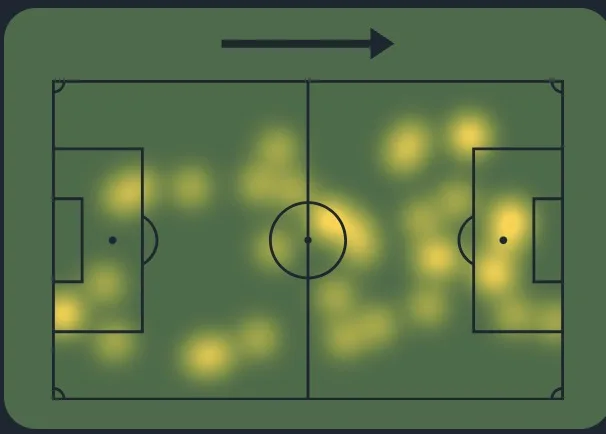
Ancelotti’s Build Up and Offensive Strategy
When Real Madrid had possession, they built up from the back, with a defensive line formed by Rudiger and Nacho Fernandez, with Toni Kroos dropping between the two. Kroos was the focal point of the visitors’ construction, circulating the ball to find an opening, and when they didn’t find one, possession returned to Kroos. Antonio Rüdiger remained most often the last player in the hosts’ defensive line, replaced by Kroos in phases when he moved up more.
His long-passing abilities were showcased with diagonal passes to the right flank looking for Valverde, but his most spectacular play came from an assist for Vinicius. He coordinated perfectly with Toni Kroos, dropping back to draw Min-jae Kim. Vinicius quickly changed direction when he saw that Kim had moved up too much, leaving much space behind him, and Toni Kroos sent a superb pass that left him in a one-on-one situation with Neuer, with Vinicius opening the score.
Real Madrid relied on speed and exploiting space with vertical launches for attackers, rather than preferring positional attacks. This was seen in all their major opportunities, whether the passes came from Toni Kroos or Luka Modric, the latter having a perfect lob for Vinicius in the 79th minute, over Kim.
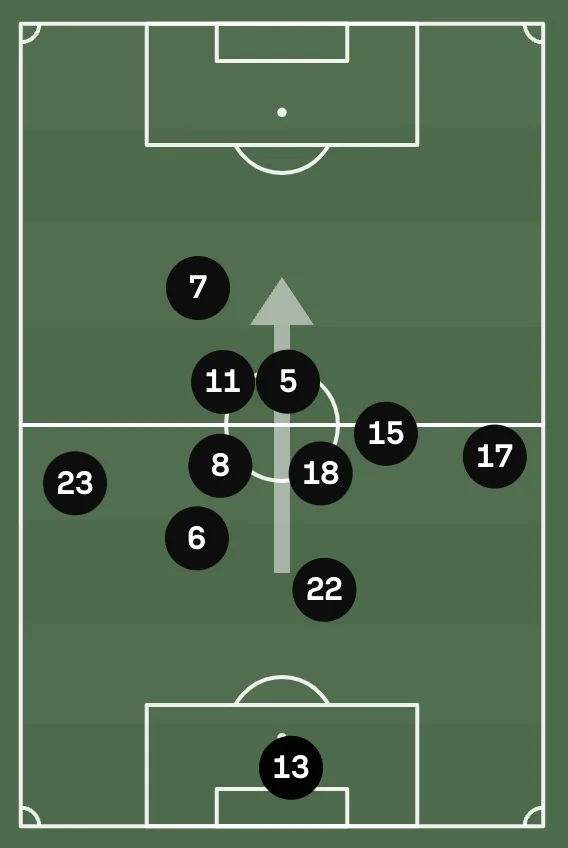
From the average position of Ancelotti’s players, we observe the structure of the Madrid players’ game.
Antonio Rüdiger remains at the back in line with Nacho, and Lucas Vázquez and Ferland Mendy push up, Vázquez often reaching in line with the midfielders, allowing Valverde to occupy the half-space on the right of the box.
Vinicius remained consistently pushed forward, waiting for launches from Kroos or Modric, a position characteristic of the striker.
Conclusions
In a captivating and balanced match, Bayern München and Real Madrid shared the merits in the first leg of the Champions League semifinals, ending with a 2-2 score. This result sets the stage for a decisive encounter in Madrid, where Real must capitalize on the advantage of away goals. Without Matthijs de Ligt, Bayern felt the absence of a key player, while Carvajal’s absence brought its own challenges for Real. Both teams had moments of brilliance, with Rüdiger excelling in neutralizing Harry Kane and Vinicius being decisive for Real. The upcoming return leg promises to be a thrilling conclusion to this semifinal battle.

